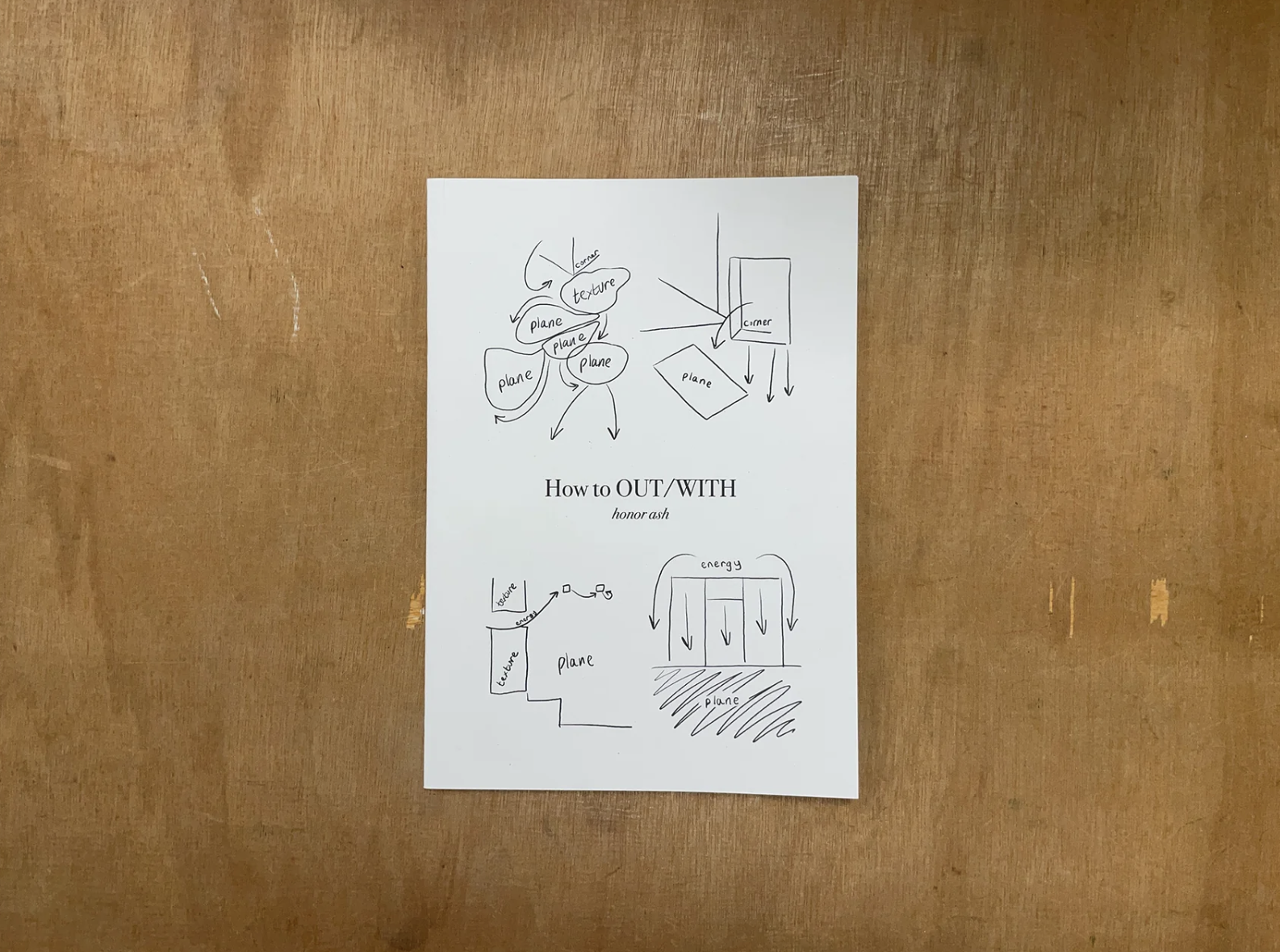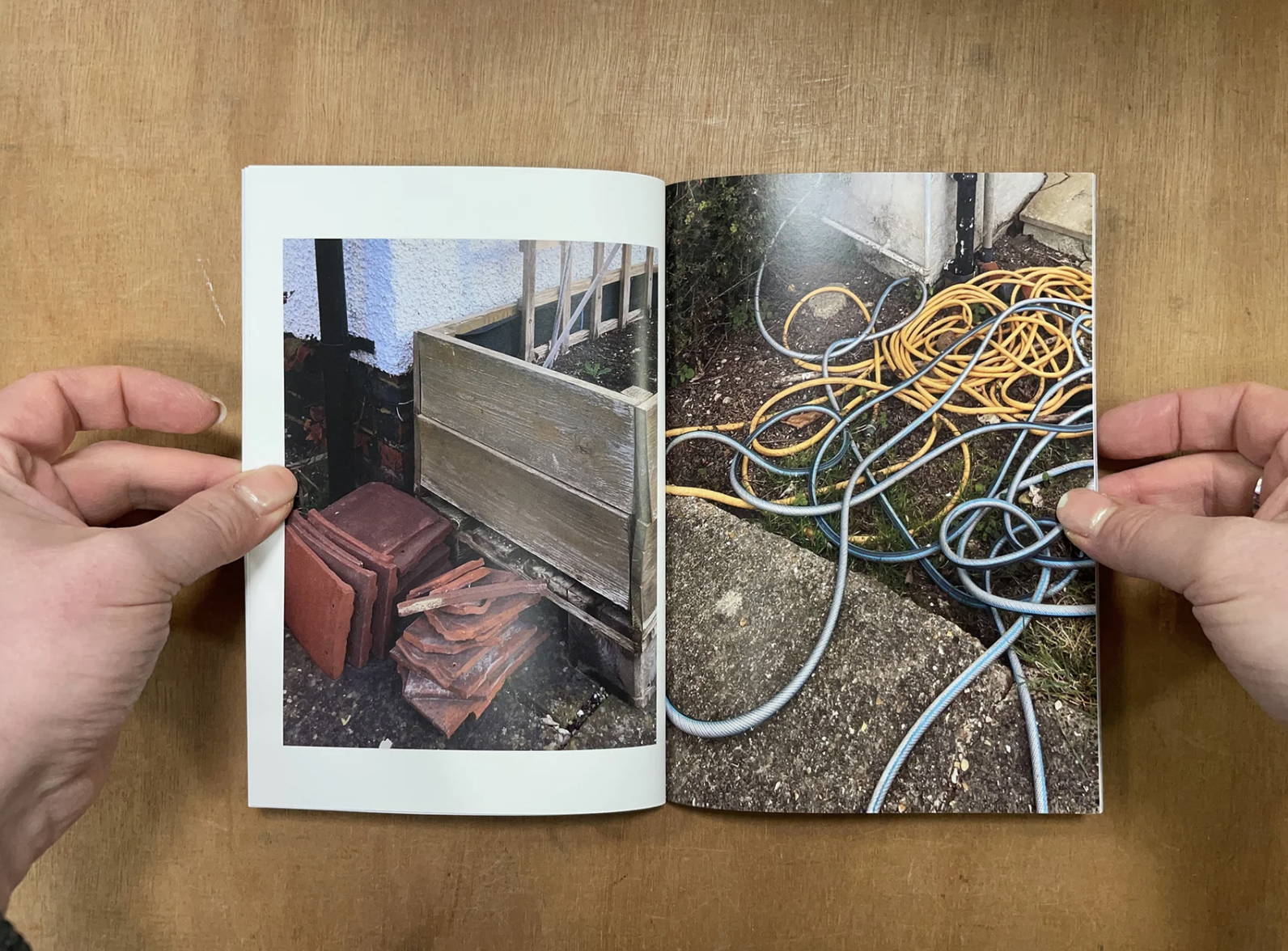How to OUT/WITH
When taking photographs, I look for simple compositions. I take something complicated, like a building, or a collection of objects, and I look for ways to frame it that reduce it down to a collection of lines and colours. Usually, these photos end up being of ‘manmade’ objects - bins, walls, cables, windows. I’ve been considering whether this ‘manmade’ nature is essential to my work, or if it’s coincidental to the type of images I like to create.
I find that when working with more ’natural’ environments, they have a complexity which doesn’t diminish, no matter how closely you look. The frame always ends up feeling cluttered - especially in the harsh, woody, starkness of the british winter. Instead of a boundary, drawn by a coherent line, and a field (or fields) of colour, the image fragments into a fractal pattern, irreducible. My work is interested in the reduction, therefore not interested in the fractal, infinite, complex.
It feels futile, however, to try and draw a line between these ‘manmade’ subjects in opposition to more ’natural’ ones. Even the natural within which I am currently resident is a remnant of human-altered land. Wysing itself is former farmland, arguably the very definition of a human-altered landscape. Very little, if any, land in the UK remains unaffected by the human urge to organise, control, maintain, and extract from.
The simple, reduced, compositions which I am drawn to are of the same origin as the ’natural’ farmland my work tends to reject. They may be more removed, further down the line in terms of ‘human intervention’, yet there is not a clear delineation between the two. Arguably, humans, and therefore everything humans do, is just as natural as any woodland.
And what is more human an act than to take something complex, scattered, and unorganiseable, and try to organise it? To try and make it into something that makes sense, that we can cultivate to our own ends. And who is to say it is scattered in the first place? Perhaps it is just organised for beings which aren’t us - the way the tree grows makes sense to the tree. The invasive plant, that dominates the landscape, reduces habitat for other beings, and appears to cause untold damage, is simply organising the world in a way which makes sense to it.
We live in a world which has been heavily reorganised in order for humans to make sense of it. The bins, and wires, and corners, and windows are simply part of that reorganisation - as emblematic of human organisational process as a fence, border, hedgerow, or barbed wire.

How to OUT/WITH is the outcome of a residency at Wysing Arts Centre commissioned by the FLOCK Emerging Creatives Network undertaken at the start of 2023. Through the residency I was able to explore in more depth the as-yet unspoken emergent rules for creating images in the OUT/WITH series, developing a set of 8 rules. These rules were then arranged into a publication, complementing images froom the residency, and an A2 poster.
How to OUT/WITH was exhibited at The Halls, Norwich, in March 2023, where prints from the residency were suspended on and around an industrial ladder, the books were available to purchase, and the poster and text above were freely given as a complement to the installation.



The book and poster of How to OUT/WITH are available for purchase below.
Buy How to OUT/WITH 36 page book at Good Press
Buy How to OUT/WITH 36 page book at Ambition’s Graveyard
Buy How to OUT/WITH A2 poster at Ambition’s Graveyard
For those on low or no income (honour system)
Download How to OUT/WITH 36 page PDF
Download How to OUT/WITH A2 poster JPG

